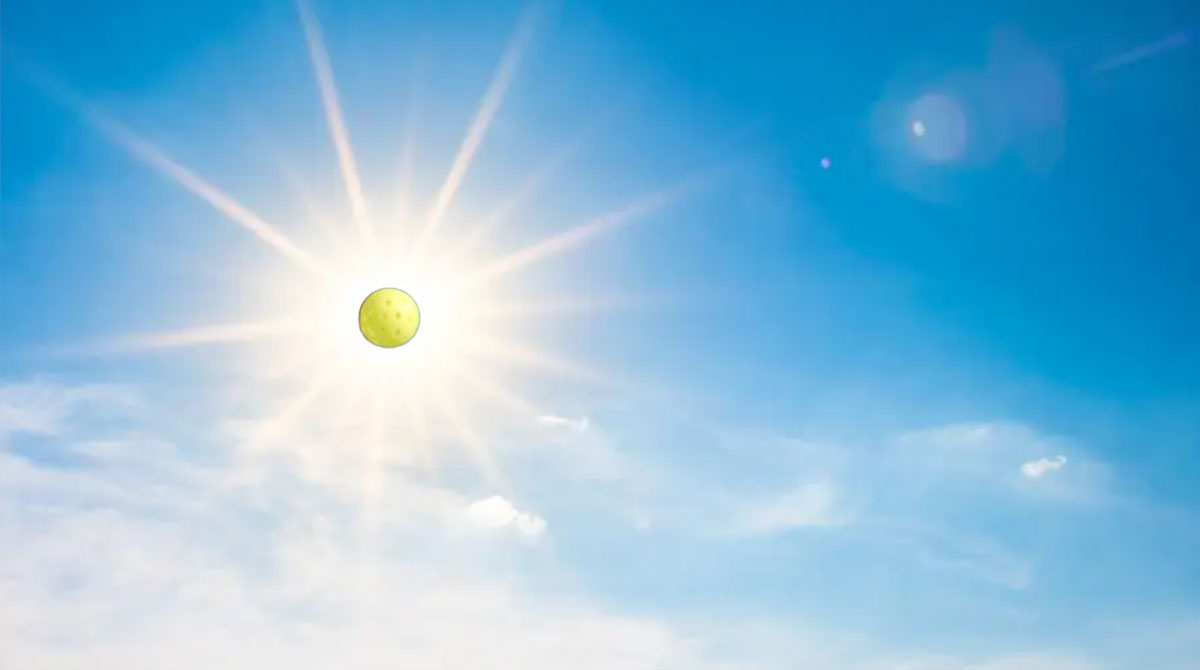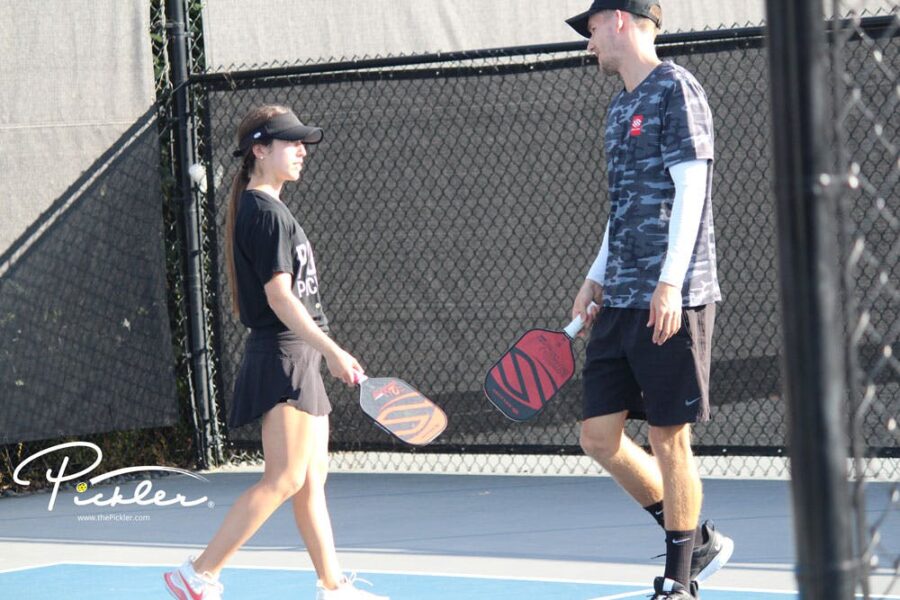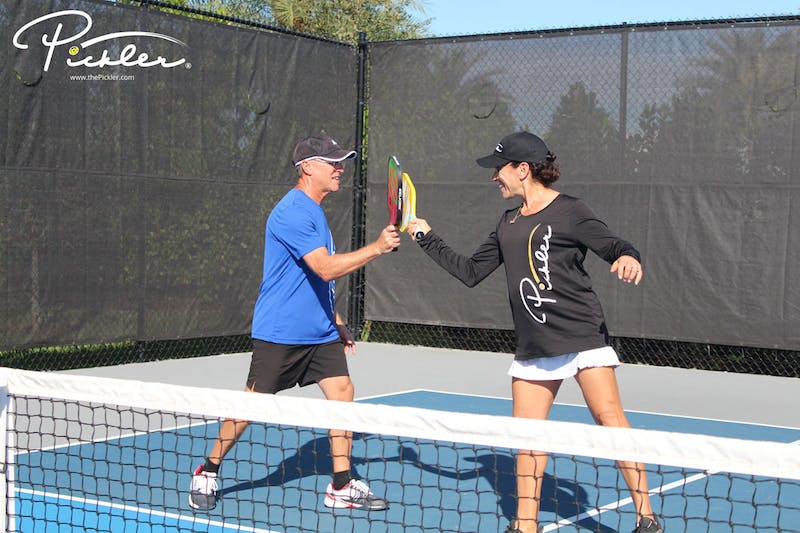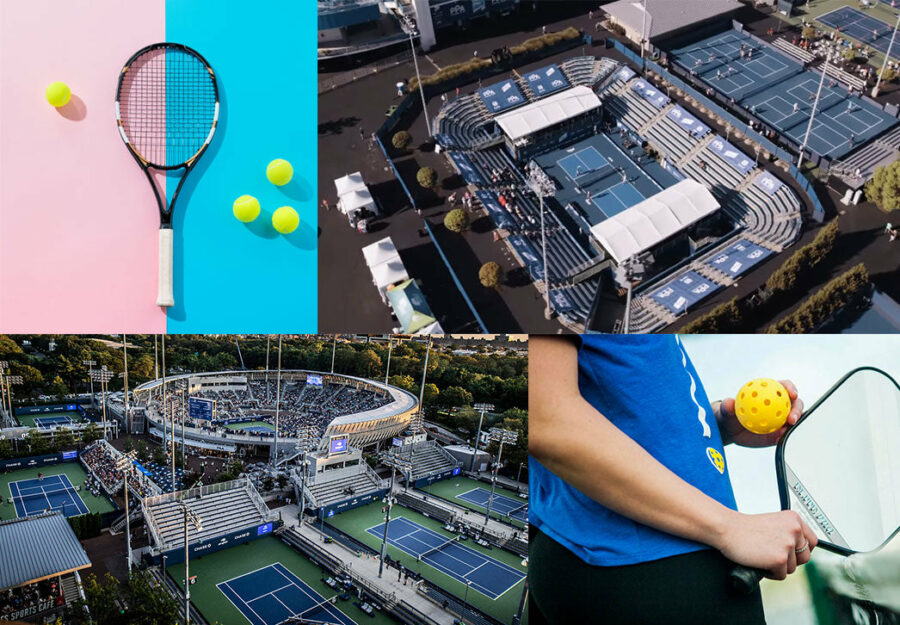Many a time, we here at Murmurs from the Losers’ Bracket have experienced what we like to think of as militant outdoor pickleball players.
These are the players who react to any talk of an indoor court in the vicinity with a quick dismissal.
“I don’t play indoor pickleball,” he or she will say.
End of discussion. That kind of declaration shows fortitude, and during the current hotter-than-blazes summer, a level of voluntary masochism bordering on foolishness.
I’ll admit, as a pickleball fanatic, I play both indoors and outdoors – and yes, I will play outdoors in South Florida’s sweltering 90-plus-degree, swampy summer heat until noon on some days, or in the early evening hours when the persistent sun is still high in the sky and cooking.
In a perfect world, I prefer playing outside to inside. But it’s hard to find a perfect world outside in July and August.
This week, I played outdoors from 9 a.m. to 11 a.m. one day and ended up feeling the sweat puddling into little lakes inside the toe boxes of my court shoes.
At one point, I noticed that my travels on the court left a trail of precipitation on the ground, as if I were a human rain cloud. I had to keep drinking water steadily, and even then, I found it necessary to take breaks between games to ward off that woozy feeling.
This same week, I played indoors in a municipal basketball gym lined for pickleball with portable nets. Not ideal.
But I played too many games to count over a three-hour period. And when it was over, I didn’t sweat enough to require a change of shirts before I drove away in my vehicle — awash only in endorphins.
So, if you’re one of those militant outdoor players, you might want to consider the indoor game, if for no other reason than to lessen your chance of heat exhaustion.
To help you evaluate this choice, I’ve made a side-by-side comparison of the outdoor v. indoor game.
But first, here are some definitional boundaries.
I am defining the “outdoor” game as one typically played in an open-air public park. No canopies. No country club amenities. Just one or more permanently lined, dedicated pickleball courts open to the general public, rather than some pickleball markings on tennis courts.
I am defining the “indoor” game as one played in a multi-use county or city gymnasium. The pickleball courts here are temporary. The surface is varnished wood, and the ball used is the 26-holed, smooth plastic indoor ball, not the 40-holed outdoor ball.
I am excluding from this comparison what I think of as “outdoor-indoor courts.” These are typically privately run warehouse-sized facilities that put the outdoor game in an air-conditioned, roofed enclosure. The balls used and court surfaces are outdoor ones. Essentially, you’re playing the outside game, but you’re inside.
In many ways, these outdoor-indoor courts are the best of both worlds. But they’re more scarce than the other two variations, and also more expensive.
So, I’m going to leave them out of this comparison. I’m defining “indoor” courts as courts that use an indoor ball in a public gymnasium that won’t charge you $1,500 annual memberships or $20 for a single session.
Oh, and one other thing. The following comparisons I’m making are from my own experiences. Your impressions may differ, but this is what I’ve found over a pretty generous sample size of games.
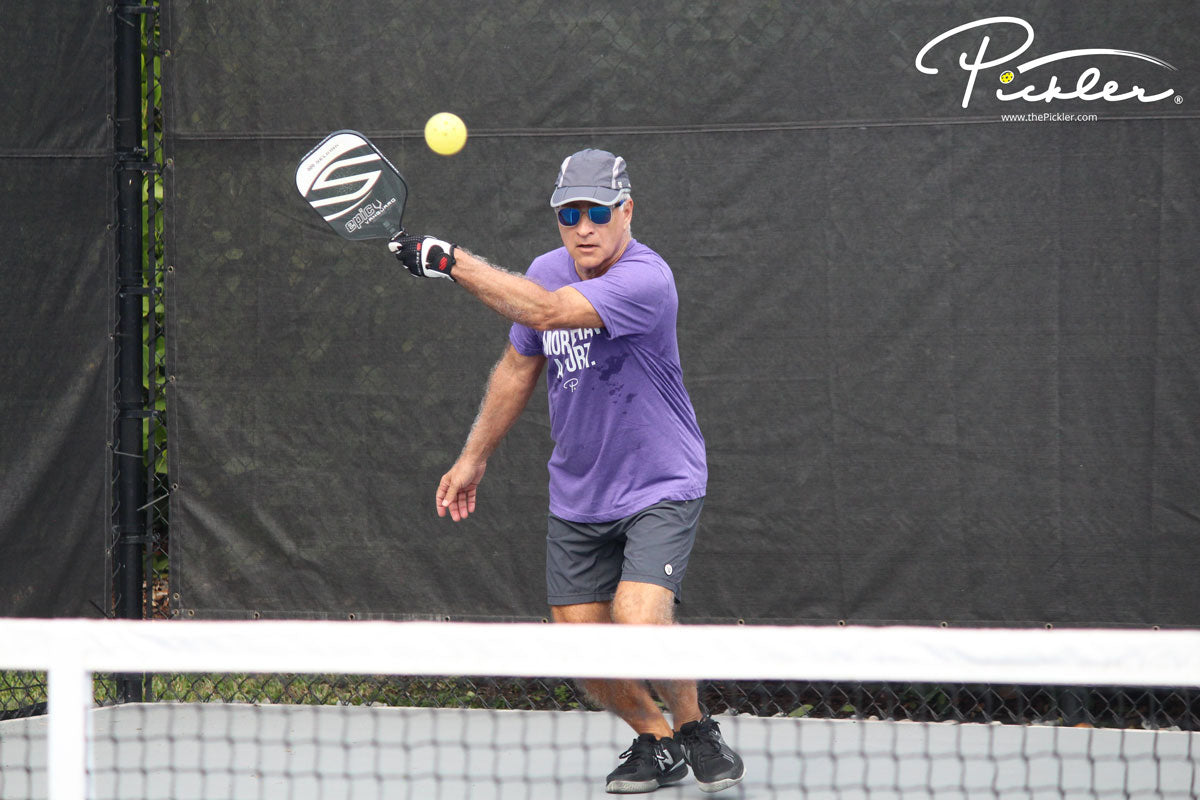
Outdoor v. Indoor Pickleball
The ball
Outdoor: The outdoor ball (Dura Fast 40, Franklin X40) feels like the ball that pickleball ought to be played with. Sure, they crack or get smacked out of shape some, but they also develop just enough scuff to help with spin and they bounce the right amount.
Indoor: The indoor ball weighs less, and while it hardly ever cracks, its smooth plastic surface doesn’t get scuffy like the outdoor ball. If you play a lot of outdoor pickleball, the indoor ball is going to feel too light.
The open-play competition
Outdoor: Like any other public park amenity, you’re bound to find a wide range of people in both age and ability on the public courts.
Indoor: Tends to have a higher concentration of older players who gravitate toward playing in a less taxing air-conditioned environment that isn’t going to create new areas of investigation for their dermatologists.
The sound
Outdoor: Being outside, sound quickly dissipates. I don’t know of any pickleball players who mind the sound of pickleball’s percussive whacks on outdoor courts.
Indoor: Noisier than the outside game. Basketball gyms are non-insulated echo chambers. Imagine playing pickleball inside a very large bathroom, and you’ve got the idea. A few pickleball games going on concurrently produces a racket — but it’s one you get used to.
The court surface
Outdoor: What can go wrong with a dedicated, permanently-lined outdoor pickleball court? A passing rain shower. It doesn’t take much for outdoor courts to get slippery and injury producing. Quick, you’d better get that squeegee before the people on the next court grab it.
Indoor: You don’t need to consult the weather report before heading off to the gym. But while rain isn’t an issue with that polished wooden gym floor, glare is. And also figuring out which court lines are for pickleball, and which ones are for basketball and volleyball.
The elements
Outdoor: Even when it’s not raining, you’re at the mercy of the wind and the sun. At times, these really hamper and shape the way the game is played. Teams often switch sides after six points to neutralize the environmental benefits of playing on one side.
Indoor: No wind, rain, or sun. But the glare from the overhead lighting on the hard-wood floors can create some vision issues.
Availability
Outdoor: Hours of play are plentiful, fixed and usually seven days a week. Many municipal courts are lit for night play too.
Indoor: Limited hours due to shared use with basketball and volleyball players. And during the summer, kids camps can create extra demands on the courts.
Cost
Outdoor: Free
Indoor: Not much, maybe $2 to $5 per session — or less if you buy a seasonal pass.
Closing argument
Outdoor: “This is how the game was intended to be played.”
Indoor: “Pickleball is pickleball.”
MURMURS FROM THE LOSERS’ BRACKET
Read past editions of Murmurs from the Losers’ Bracket, including:
- The Ozempic Ad
- Ball On Court? Maybe Not
- The PPA, the APP and Monty Python
- Time to Get Help at Bangers Anonymous
- “It’s an Injury Sport”
- A Pickleball Translation Guide
- What’s Your Pickleball Nickname?
- Tennis the Menace
- Is There Such a Thing as “Pickleball Torture”?
- How to Be an Effective Pickleball Snob
- All You Need Is Glove
- The Lesson McDonald’s French Fries Have for Pickleball
- Tunes on the Court
- The Poetry of Empty Courts
- “Head Targeting” Rule Change Not a Brainy Idea
- Getting Beyond “Good Game”
- Why Are Pickleball Trophies Such a Big Deal?
- Stop Messing with the ATP
- When Discussions of Rules Turn Unruly
- A Former Pickleball Addict Speaks Out
- Separating the Drinkers from the Dinkers
- Turning Every Magazine into a Pickleball Magazine
- Zen and the Art of Pickleball Maintenance
- Spirited Pickleball Poetry
- Making Pickleball Less “Devastating” to Amateurs
- Finding Romance on the Pickleball Court: Top 10 Pickup Lines
- Sign of the Times: Pickleball License Plates
- Red Light, Green Light: Playing Traffic Cop on the Court
- The Pickler Limerick Challenge
- The Pickler Limerick Challenge Heats Up
- The Pickler Limerick Challenge Wraps Up
- Pickleball & the $100 Hamburger
- Before We Play, Partner, Please Sign This…
- Pickleball’s Most Powerful Spoken Word
- It’s Been a Hard Day’s Night for Pickleball Skeptics
- Be Kind to Your Local “Paddle Sheriff”
- Is There Such a Thing as Too Many Paddles?
- Silence Is… Not My Style
- “Going Ham” Over Pickleball’s Generational Divide
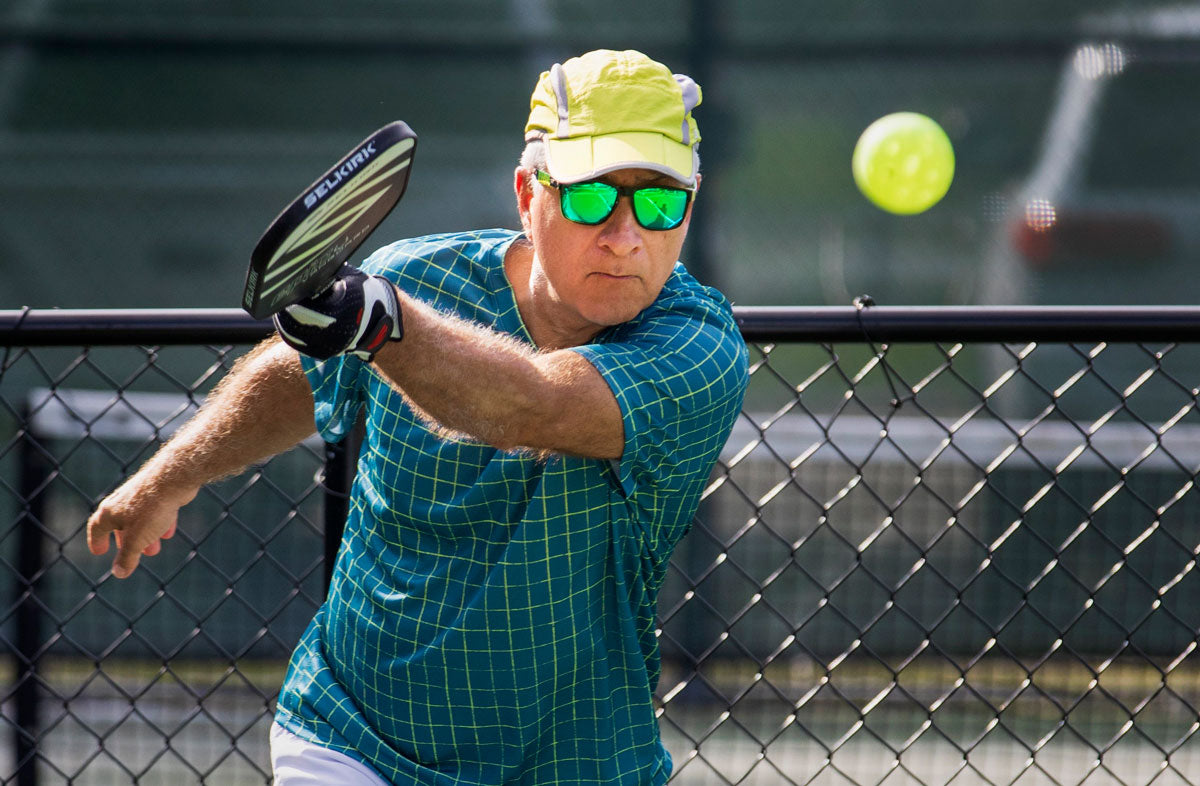
Frank Cerabino is a long-time columnist for the Palm Beach Post in Florida, a pickleball addict like the rest of us, and a newly published author. Check out Frank’s newly released book, I Dink, Therefore I Am: Coming to Grips with My Pickleball Addiction (available on Amazon and a great read (or gift!) for any pickleball player), for pickleball tips and laughs!

